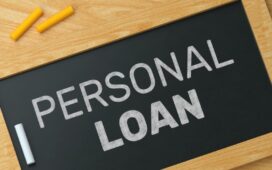how to buy an investment property
Investing in property has been a popular wealth-building strategy for Australians. However, it is not without risks and challenges, especially for first-time buyers. One of the biggest hurdles that aspiring property investors must overcome is the deposit requirement. To secure a home loan, they need to save at least 20% of the property’s purchase price, which can amount to tens or even hundreds of thousands of dollars, depending on the location and type of property. In this blog post, we’ll guide you through the process of calculating what you can invest, weighing the pros and cons of buying an investment property, and getting expert advice to avoid costly mistakes.
Step 1: Determine your capacity to invest
Before you start browsing listings or contacting agents, you need to know how much you can afford to spend on a property. This requires a thorough analysis of your income, expenses, and sources of capital. You should factor in all the costs involved in purchasing, owning, and maintaining a property, such as stamp duty, legal fees, council rates, insurance, repairs, and vacancies. You can use online calculators or consult a financial planner to estimate your borrowing power and potential return on investment.
Step 2: Research the market and location
Once you have a clear idea of your budget and goals, it’s time to narrow down your options based on the location, property type, and rental yields. You can consult real estate websites, local experts, and relevant statistics to get an overview of the market trends and opportunities in your preferred area. Some factors to consider include the demographics, infrastructure, amenities, schools, employment, and transport links. You should also compare different properties based on their features, condition, age, and potential for capital growth and rental income.
Step 3: Evaluate the pros and cons of buying an investment property
Investing in property can offer several benefits, but it also comes with some drawbacks that you need to be aware of. Some of the advantages of buying an investment property include:
- Secure and stable investment: Property is generally considered a safe and stable asset that can provide regular income and appreciate in value over time. It can also provide diversification and protection against inflation and market
- Positive cash flow: If you choose the right location and type of property, you can generate positive cash flow from rental income that exceeds the expenses and mortgage repayments. This can not only help you pay off your loan faster but also provide passive income and tax
- Tax deductions: As a property investor, you can claim various expenses and deductions related to your rental property, such as interest, depreciation, repairs, and insurance. This can reduce your taxable income and increase your return on
- Long-term investment potential: Property is generally considered a long-term investment that can grow in value over time. If you can hold onto the property for 10 or more years, you can benefit from capital gains and equity growth that can boost your net worth and future financial
- Building an investment portfolio: Investing in property can be a strategic way to build a diversified investment portfolio that can balance risks and returns with other assets, such as stocks, bonds, or
On the other hand, investing in property also has some disadvantages that you should consider, such as:
- Lack of liquidity: Property is a relatively illiquid asset that requires time and effort to buy and If you need to access your funds quickly, you may not be able to sell your property easily or without losing money.
- High entry costs: Buying an investment property often requires a large deposit, which can strain your finances and limit your options. You may also need to pay additional fees and charges, such as lenders mortgage insurance (LMI), if you don’t have the 20%
- Bad tenants or none at all: Renting out a property can be a stressful and unpredictable experience, especially if you have difficult tenants or periods of vacancy. This can affect your cash flow, maintenance costs, and overall return on
- Ongoing maintenance: Owning a property requires regular maintenance and repairs, which can be expensive and time-consuming. You need to budget for these costs and ensure that you have adequate insurance
- Higher interest rates: Investment loans usually have higher interest rates and fees than owner-occupied loans. This can add up to thousands of dollars in additional costs over the life of the
Step 4: Get expert advice
Investing in property involves complex legal, financial, and practical considerations that often require expert advice from professionals. You should consult a property lawyer, a mortgage broker or lender, a tax agent, and a property manager or agent to help you navigate the rules and regulations surrounding property ownership in Australia. They can also provide you with valuable insights and recommendations on the best strategies to achieve your investment goals and minimise your risks.
Investing in property in Australia can be a rewarding and challenging experience that requires careful planning, research, and advice. By following the practical tips and weighing the pros and cons of buying an investment property, you can make informed decisions that align with your financial goals and lifestyle preferences. Remember that the key to success is to start early, set realistic expectations, and be patient and persistent. With the right mindset and tools, you can unlock the potential of property investment and achieve financial freedom and security.










